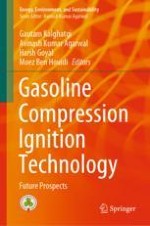2022 | OriginalPaper | Chapter
3. The Effect of Control Strategies on the Gasoline Compression Ignition (GCI) Engine: Injection Strategy, Exhaust Residual Gas Strategy, Biodiesel Addition Strategy, and Oxygen Content Strategy
Authors : Nguyen Xuan Khoa, Yanuandri Putrasari, Dinh Nam Vu, Nguyen Ho Xuan Duy, Ocktaeck Lim
Published in: Gasoline Compression Ignition Technology
Publisher: Springer Nature Singapore
Activate our intelligent search to find suitable subject content or patents.
Select sections of text to find matching patents with Artificial Intelligence. powered by
Select sections of text to find additional relevant content using AI-assisted search. powered by
